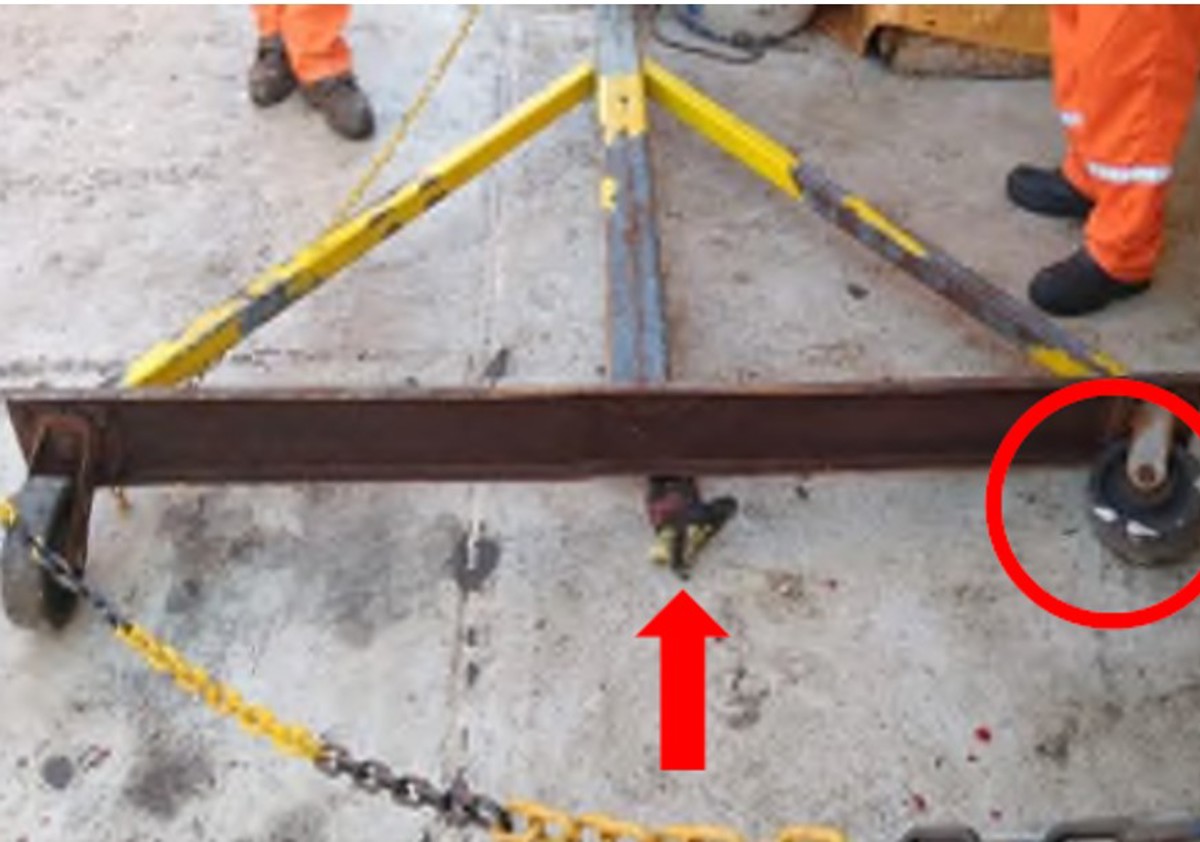LTI: Finger crushed while moving mobile gantry crane
- Safety Flash
- Published on 16 February 2023
- Generated on 15 July 2025
- IMCA SF 05/23
- 3 minute read
Jump to:
A crew member suffered a crushed index finger during manual handling of heavy equipment.
What happened?
The bosun, the deck supervisor and two others were working on disassembling the mobile gantry crane to move it to another location. They successfully took the gantry to pieces and manually moved one of the support legs. They decided to use a pallet trolley to shift the second support leg. They found that they could not get the second support leg (on the pallet trolley) past the first support leg which was blocking the way.
So, the deck team attempted to manually reposition the first support leg.
The injured person (the bosun) started dragging the first support leg, without waiting for help, by grabbing its base from below. As he did so, a vertically positioned wheel turned, causing the support leg to collapse onto his finger and crush it against the deck.
First aid was provided and the bosun had to be medevaced for further treatment ashore.

Fig. 1: Mobile gantry crane
(image: www.hoistuk.com/products/portable-mobile-gantry/)

Fig. 2: Grabbing the base of the support leg (simulation)

Fig. 3: The wheel on the right turned, causing the leg to collapse
What went wrong?
- There was inadequate planning, lack of communication, lack of supervision, and lack of experience in handling manual loads.
- Company procedures were not followed: the Risk Assessment was inadequate. No account was taken of:
- The weight of the gantry.
- How many people would be needed to move it safely.
- The technique to be used and the route through which the loads would be moved.
- The weight of the gantry.
- No-one stopped the job – “What are we doing here? Let’s just stop a moment and re-assess the situation…”
- There was insufficient safety awareness of the considerable “line of fire” risks faced – no attention was paid to the pinch point risk.
Actions taken
- The company discontinued the use of this very heavy steel mobile gantry crane with no safety locks on the wheels, and replaced it with a new, much lighter Aluminium mobile gantry crane with wheel safety locks.
- Easier access between port and starboard deck areas was created by modifying (extending) the height of cable tray pipes to avoid the necessity of assembling/disassembling of the gantry crane before movement.
- Re-emphasised crew training on Permit to Work and Risk Assessment – with particular emphasis on identifying the Hazards related to Pinch Points.
- Conducted further training with on-board leadership on the importance of applying safety tools such as toolbox talks, “step back and take 5”, stop work policy, etc.
Related safety flashes
-
IMCA SF 05/22
28 February 2022
-
-
IMCA SF 04/16
5 February 2016
-
IMCA SF 05/15
2 April 2015
IMCA Safety Flashes summarise key safety matters and incidents, allowing lessons to be more easily learnt for the benefit of the entire offshore industry.
The effectiveness of the IMCA Safety Flash system depends on the industry sharing information and so avoiding repeat incidents. Incidents are classified according to IOGP's Life Saving Rules.
All information is anonymised or sanitised, as appropriate, and warnings for graphic content included where possible.
IMCA makes every effort to ensure both the accuracy and reliability of the information shared, but is not be liable for any guidance and/or recommendation and/or statement herein contained.
The information contained in this document does not fulfil or replace any individual's or Member's legal, regulatory or other duties or obligations in respect of their operations. Individuals and Members remain solely responsible for the safe, lawful and proper conduct of their operations.
Share your safety incidents with IMCA online. Sign-up to receive Safety Flashes straight to your email.